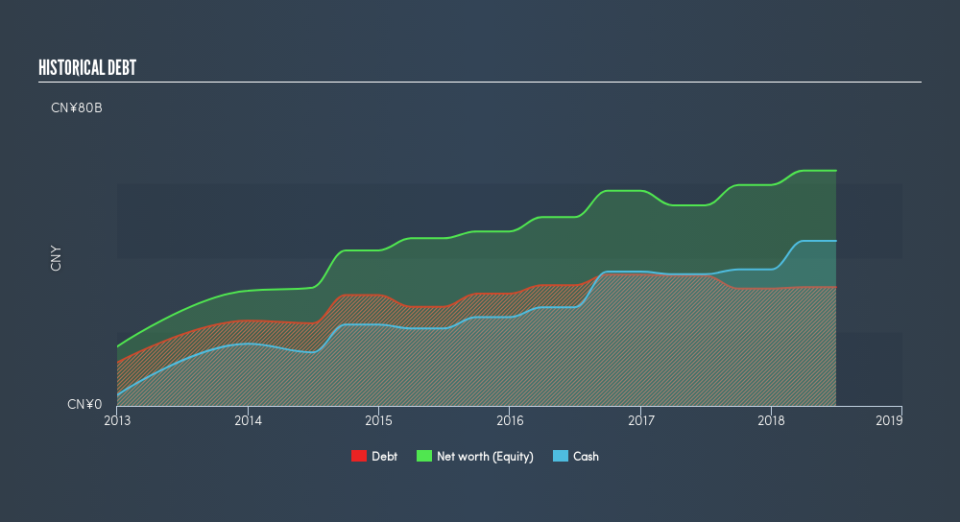What does BAIC Motor Corporation Limited’s (HKG:1958) Balance Sheet Tell Us About Its Future?

Stocks with market capitalization between $2B and $10B, such as BAIC Motor Corporation Limited (HKG:1958) with a size of HK$39b, do not attract as much attention from the investing community as do the small-caps and large-caps. Despite this, commonly overlooked mid-caps have historically produced better risk-adjusted returns than their small and large-cap counterparts. 1958’s financial liquidity and debt position will be analysed in this article, to get an idea of whether the company can fund opportunities for strategic growth and maintain strength through economic downturns. Don’t forget that this is a general and concentrated examination of BAIC Motor’s financial health, so you should conduct further analysis into 1958 here.
View our latest analysis for BAIC Motor
Want to participate in a research study? Help shape the future of investing tools and earn a $60 gift card!
Does 1958 Produce Much Cash Relative To Its Debt?
1958’s debt levels have fallen from CN¥35b to CN¥32b over the last 12 months – this includes long-term debt. With this reduction in debt, 1958 currently has CN¥45b remaining in cash and short-term investments , ready to be used for running the business. Additionally, 1958 has generated CN¥21b in operating cash flow during the same period of time, resulting in an operating cash to total debt ratio of 67%, signalling that 1958’s debt is appropriately covered by operating cash.
Can 1958 meet its short-term obligations with the cash in hand?
With current liabilities at CN¥88b, the company may not be able to easily meet these obligations given the level of current assets of CN¥85b, with a current ratio of 0.96x. The current ratio is calculated by dividing current assets by current liabilities.
Can 1958 service its debt comfortably?
With a debt-to-equity ratio of 50%, 1958 can be considered as an above-average leveraged company. This is not uncommon for a mid-cap company given that debt tends to be lower-cost and at times, more accessible. We can check to see whether 1958 is able to meet its debt obligations by looking at the net interest coverage ratio. A company generating earnings before interest and tax (EBIT) at least three times its net interest payments is considered financially sound. In 1958’s, case, the ratio of 107x suggests that interest is comfortably covered, which means that lenders may be inclined to lend more money to the company, as it is seen as safe in terms of payback.
Next Steps:
Although 1958’s debt level is towards the higher end of the spectrum, its cash flow coverage seems adequate to meet debt obligations which means its debt is being efficiently utilised. However, its lack of liquidity raises questions over current asset management practices for the mid-cap. Keep in mind I haven’t considered other factors such as how 1958 has been performing in the past. I suggest you continue to research BAIC Motor to get a better picture of the stock by looking at:
Future Outlook: What are well-informed industry analysts predicting for 1958’s future growth? Take a look at our free research report of analyst consensus for 1958’s outlook.
Valuation: What is 1958 worth today? Is the stock undervalued, even when its growth outlook is factored into its intrinsic value? The intrinsic value infographic in our free research report helps visualize whether 1958 is currently mispriced by the market.
Other High-Performing Stocks: Are there other stocks that provide better prospects with proven track records? Explore our free list of these great stocks here.
We aim to bring you long-term focused research analysis driven by fundamental data. Note that our analysis may not factor in the latest price-sensitive company announcements or qualitative material.
If you spot an error that warrants correction, please contact the editor at editorial-team@simplywallst.com. This article by Simply Wall St is general in nature. It does not constitute a recommendation to buy or sell any stock, and does not take account of your objectives, or your financial situation. Simply Wall St has no position in the stocks mentioned. Thank you for reading.


